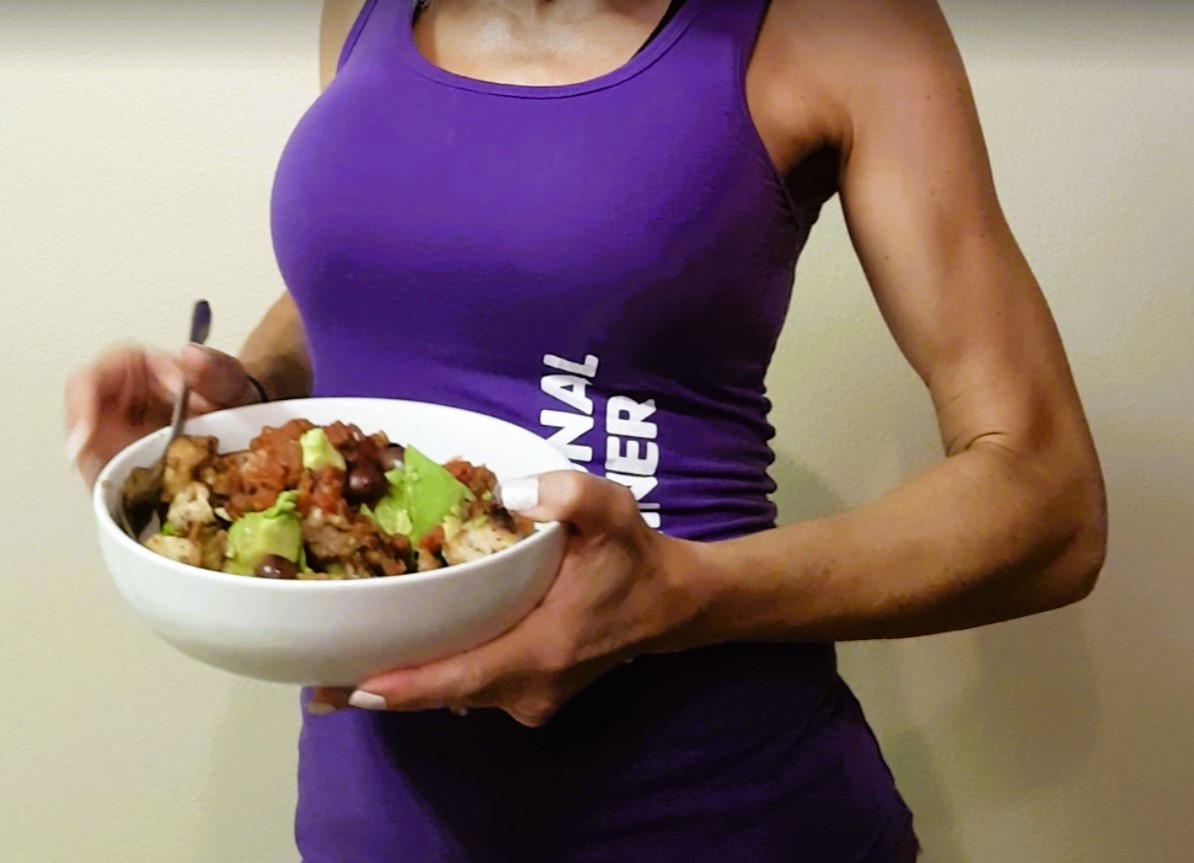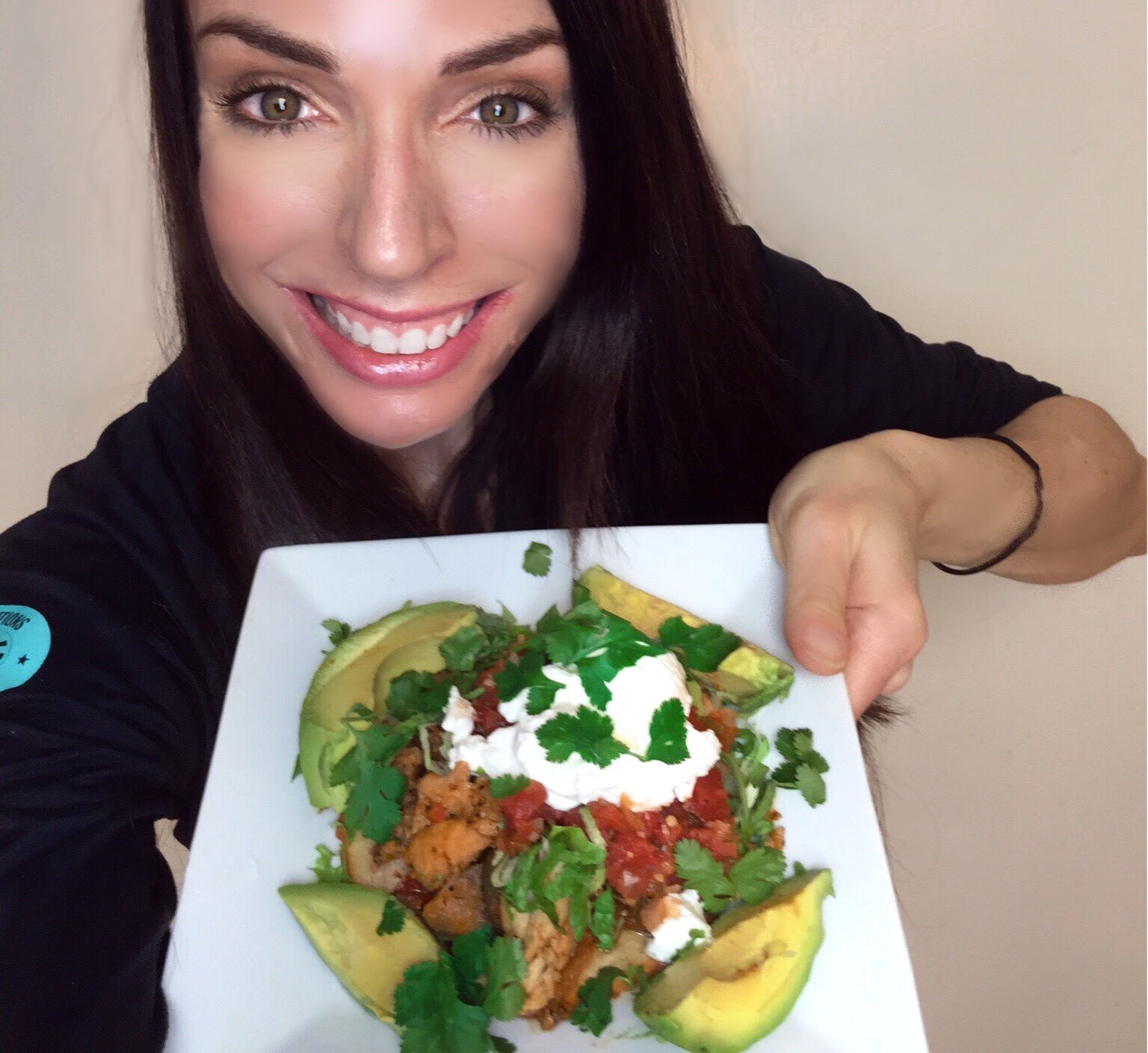
Navigating eating for perimenopause can feel like riding a wave—you’re in the water, but the tides of your body are shifting. Suddenly, cravings hit at odd hours, your energy dips, and that blood sugar roller coaster feels more like a wild ride.
I get it! As a certified NASM personal trainer and nutrition coach with over 16 years of experience working with women, I’ve personally witnessed (myself) and seen firsthand how small changes in eating for perimenopause can have a profound impact.
Let’s talk about practical ways to practice mindful eating for perimenopause, manage cravings, balance blood sugar, and feel more in control.
Why Cravings and Blood Sugar Fluctuations Are Common in Perimenopause
First, let’s demystify why these changes are happening. During perimenopause, fluctuating estrogen and progesterone levels can affect how our bodies process carbohydrates, store fat, and even signal hunger and satiety. Lower estrogen levels often make our cells less responsive to insulin, the hormone that helps regulate blood sugar. The result? Blood sugar spikes, crashes, and, you guessed it—cravings.
These cravings aren’t about willpower; they’re your body’s way of looking for balance. With some mindful strategies, we can work with these signals rather than against them.
Tip #1: Prioritize Balanced Meals with Protein, Fiber, and Healthy Fats
Balanced meals set a solid foundation for eating for perimenopause. When you include protein, fiber, and healthy fats in each meal, you help stabilize blood sugar, keep energy steady, and reduce those cravings that can feel overpowering.
– **Protein**: This is your best friend for satiety and muscle preservation. Lean meats, eggs, Greek yogurt, tofu, or even plant-based options like lentils and quinoa are great choices. Aim to include at least a palm-sized portion of protein in every meal.
– **Fiber**: Fiber slows digestion, helping to avoid blood sugar spikes and keeping you fuller for longer. Think veggies, whole grains, and legumes. Adding leafy greens to your plate or tossing a handful of chia seeds into your smoothie is a simple way to boost fiber intake.
– **Healthy Fats**: Fats are essential, not the enemy! Healthy fats, like avocados, nuts, seeds, and olive oil, give meals staying power. They also help keep hormones in balance. Think of a meal as complete when you have a balance of these three components.
Try a simple meal like grilled salmon with roasted sweet potatoes and a big pile of mixed greens with olive oil and a sprinkle of pumpkin seeds. It’s a meal that fuels you, keeps you satisfied, and helps curb those between-meal cravings.
Tip #2: Eat Mindfully to Tune In to Your Body’s Signals
During perimenopause, it’s common to feel more “disconnected” from our bodies due to all the changes. Practicing mindful eating for perimenopause can help you reconnect, allowing you to differentiate between real hunger, cravings, and emotional triggers.
– **Slow Down**: It takes about 20 minutes for your brain to register fullness. Try putting your fork down between bites, savoring the flavors, and taking a few deep breaths. Not only does this help you enjoy your food more, but it also gives your body time to signal when it’s had enough.
– **Check In with Yourself**: Before reaching for a snack, pause and ask yourself, “Am I really hungry?” Sometimes, we’re looking for a distraction, comfort, or stress relief rather than food. If you’re not truly hungry, try drinking a glass of water, taking a short walk, or doing a quick breathing exercise.
Mindful eating isn’t about denying yourself; it’s about tuning into what your body actually needs. Over time, this practice can help you feel more in control and reduce impulsive cravings.
Tip #3: Don’t Fear Carbs—Focus on the Right Kind
Carbohydrates can be a double-edged sword in perimenopause. While simple carbs (think white bread, pastries, and sugary snacks) can cause blood sugar spikes and crashes, complex carbs provide the steady energy our bodies crave.
– **Choose Complex Carbs**: These include whole grains (like oats, quinoa, and brown rice), starchy vegetables (like sweet potatoes and carrots), and legumes. They digest slowly, releasing glucose into the bloodstream gradually, which keeps energy levels stable.
– **Pair Carbs with Protein or Fats**: If you’re having a slice of whole-grain toast, add avocado or almond butter to balance the blood sugar impact. Love fruit? Pair an apple with a handful of nuts or a slice of cheese. By pairing carbs with protein or fat, you avoid the “spike and crash” effect that often leads to cravings.
Tip #4: Hydrate Strategically
Believe it or not, dehydration can sometimes disguise itself as hunger or cravings. When our bodies are even slightly dehydrated, it can lead to low energy, making us more likely to reach for quick-fix sugary or salty snacks.
– **Start Your Day with Water**: Before coffee or tea, drink a glass of water to kickstart hydration. You’re essentially “breaking the fast” after a night’s sleep, and this can help set a tone of hydration for the day.
– **Carry a Water Bottle**: Keep water within reach and sip throughout the day. Adding slices of cucumber, lemon, or a splash of electrolyte powder can make it more enjoyable. Herbal teas are another great way to hydrate, especially in the evening when cravings might kick in.
Tip #5: Include Magnesium-Rich Foods to Combat Cravings
Magnesium plays a critical role in regulating blood sugar and insulin, and a deficiency in this mineral can make cravings (especially for sweets!) worse. During perimenopause, our bodies often need more magnesium due to hormonal changes.
– **Magnesium-Rich Foods**: Incorporate foods like leafy greens, nuts (especially almonds and cashews), seeds, and dark chocolate. Yes, chocolate! Just opt for dark chocolate with at least 70% cocoa content to keep sugar low while satisfying that sweet tooth.
If you’re really struggling with cravings, you might also consider a magnesium supplement, but it’s best to check with your healthcare provider first.
Closing Thoughts: Small Steps, Big Results
Eating for perimenopause brings its own set of challenges, but with mindful eating and balanced meals, you can create a foundation that helps you feel steady and energized. Remember, it’s not about perfection; it’s about creating habits that nourish you and make you feel good.
These changes might seem small, but I’ve seen them make a big difference for so many women. Trust the process, honor your body’s signals, and focus on consistency over perfection. After all, this journey isn’t just about managing cravings—it’s about building a relationship with your body that will support you in every stage of life.
Author: Coach Stephanie, Gravity Transformation

Sources:
1. **Björntorp, P.** *Endocrine abnormalities of obesity.* Metabolism, 1995. Explores how hormonal changes impact metabolism and weight.
2. **Davy, B. M., Van Walleghen, E. L., & Orr, J. S.** *Sex differences in dietary habits and eating behavior.* Appetite, 2006. Examines differences in eating behaviors, especially relevant to perimenopausal shifts.
3. **Soares, M. J., et al.** *The role of dietary protein and fat in appetite control and satiety in women.* Nutrition Research, 2004. Focuses on protein and fat’s role in satiety, relevant for balanced meals.
4. **Rao, A. V., & Demark-Wahnefried, W.** *The role of dietary phytochemicals in the regulation of appetite and body weight.* Journal of Nutrition, 2006. Discusses how fiber and other nutrients help regulate appetite.
5. **Barbagallo, M., & Dominguez, L. J.** *Magnesium and aging.* Current Pharmaceutical Design, 2010. Highlights the importance of magnesium in managing blood sugar and cravings, especially in aging women.



